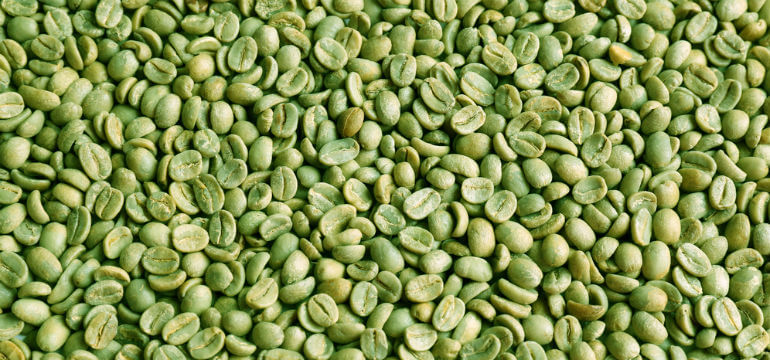Answer these simple questions and we will find you the BEST prices
Which type of solar quotes do you need?
It only takes 30 seconds
100% free with no obligation

Get up to 4 quotes from our selected suppliers by filling in only 1 form

Save money by comparing quotes and choosing the most competitive offer

Our service is 100% free and with no obligation
- Market-Inspector.co.uk
- Blog
- How Is Decaf Coffee Made?
How is Decaf Coffee Made?

No More Caffeine
Acknowledging the rights of the growing decaffeinated market, we will overcome our scorn for the decaf coffee and we will not stand against the “coffee-vegans” and their preferences.
We will focus our interest towards one of the most simple, justified, and reasonable questions around decaffeinated coffee: How is it possible to make a decaf coffee, while caffeine is inside the green coffee bean?
The answer is not so simple, though. There are four main methods of decaffeination, but we will refer to them in detail as we continue.
However, if you desire a coffee machine rental with a decaf option and you don’t want to read about fun stats or historical facts for decaffeination, then you only have to do one thing. Fill out the form on the right side of the page and our well-trained professionals will prepare a list of suppliers, according to your “taste”. There are no obligations or charges, so don’t be sceptic about it.

There Is Almost No Such Thing as Decaf Coffee
According to a study done by the University of Florida in 2006, nine out of ten decaf coffees contain quantities of caffeine between 8.6mg to 13.9mg per cup. In other words, even though an average cup of coffee can consist up to 10 times more caffeine compared to a cup of decaffeinated coffee, yet 90% of decaf coffee drinks are not actually 100% decaffeinated.
Before you go crazy with this fact let’s see what is legal by the law. For USA, a product is not considered decaf, unless 97% of the caffeine has been removed. For European Union’s standards coffee beans have to be 99,9% caffeine-free in comparison with their total weight.

The Invention Behind the Product
Even though all started in some German chemical laboratories in the early nineteenth century, the first commercial decaffeination process was invented decades later in 1903, by Dr. Ludwig Roselius. His innovative idea was to use steam to make the beans porous.
One of the basic compounds that Roselius used for making the decaf coffee was the well-known chemical, benzene. Benzene was popularised in several commercial products at the time, like in after-shave lotions and paint. Thankfully, all this changed when it turned out that benzene was extremely harmful for human beings.
Nonetheless, the invention of decaf coffee was interpreted as a remarkable development. For the first time it was possible for people addicted to caffeine to avoid being hyper all the time.
Five Basic Methods of Decaffeination
Coffee contains close to 400 compounds that all contribute to the richness of its flavour and aroma. However, the goal and purpose of the decaffeination process is to remove only one of these chemicals (caffeine) and to leave all the others untouched.
However, as explained above, the decaffeination process does not remove 100% of caffeine from the coffee beans, still our main question remains unanswered; how is the decaf coffee made, while caffeine is inside the green coffee bean?
There are four different ways to extract caffeine to and make the coffee become decaffeinated. All of which are performed on unroasted green coffee beans:

Hypercritical Carbon Dioxide Method of Decaffeination
The milled but not roasted green coffee beans are soaked in highly compressed carbon dioxide to a state of 73 to 300psi for about ten hours. The carbon dioxide in the vessel operates as a solvent that extracts the caffeine from the coffee beans. Finally, the pressure is reduced and the carbon dioxide evaporates eliminating the absorbed caffeine. The process is repeated until the desired level of caffeine reduction is achieved.
Direct Solvent Method of Decaffeination
Instead of using carbon dioxide to remove caffeine, a different solvent is used, like coral methane or ethyl acetate. These “naturally-found” (can be extracted from fruits) chemicals discard the caffeine from the already steamed (for about 30 minutes) beans. The process is repeated in order to remove any remaining solvent.
Indirect Solvent Method of Decaffeination
This method is more common in Europe. The green coffee beans are soaked for several hours in nearly boiling water. Several compounds along with caffeine are extracted from the coffee beans. Then, the caffeine is firstly captured either through methylene chloride or ethyl acetate and subsequently, evaporates from the high temperature of the heat. All the remaining compounds are then reintroduced to the beans in order to strengthen the coffee beans with all the aromatic oils.
Swiss Water Process of Decaffeination
This method labelled from a Swiss firm that originally pioneered it. The company discovered a way to extract the caffeine without using any (natural or not) chemicals. Instead, the process combines two different stages and the decaffeination is actualised only through hot water, steam and osmosis.

Decaf Drinkers Have Rights Too
As it was mentioned in the beginning, we have to protect minority interests. So, if you fight for coffee equality or you are a “coffee-vegan” yourself, and you demand a decaf coffee option for your new coffee machine, don’t waste anymore time.
Fill out the form on the top of this page and our experts will prepare a list of suppliers according to your needs. There are no charges or obligations, so give it a try as soon as possible.

Aris Vourvoulias is the Head of Content at Market Inspector. Aris is a passionate author and marketer with a background in journalism. He continuously writes, reviews, and educates himself in the areas of business, finance, and renewable energy. He has managerial experience in many European markets, including UK, Denmark, Sweden, and Finland. He and his content team have been featured on reputable sites like Business Insider, Entrepreneur, Guardian, Forbes, HubSpot, and more.
We strive to connect our customers with the right product and supplier. Would you like to be part of Market Inspector?

